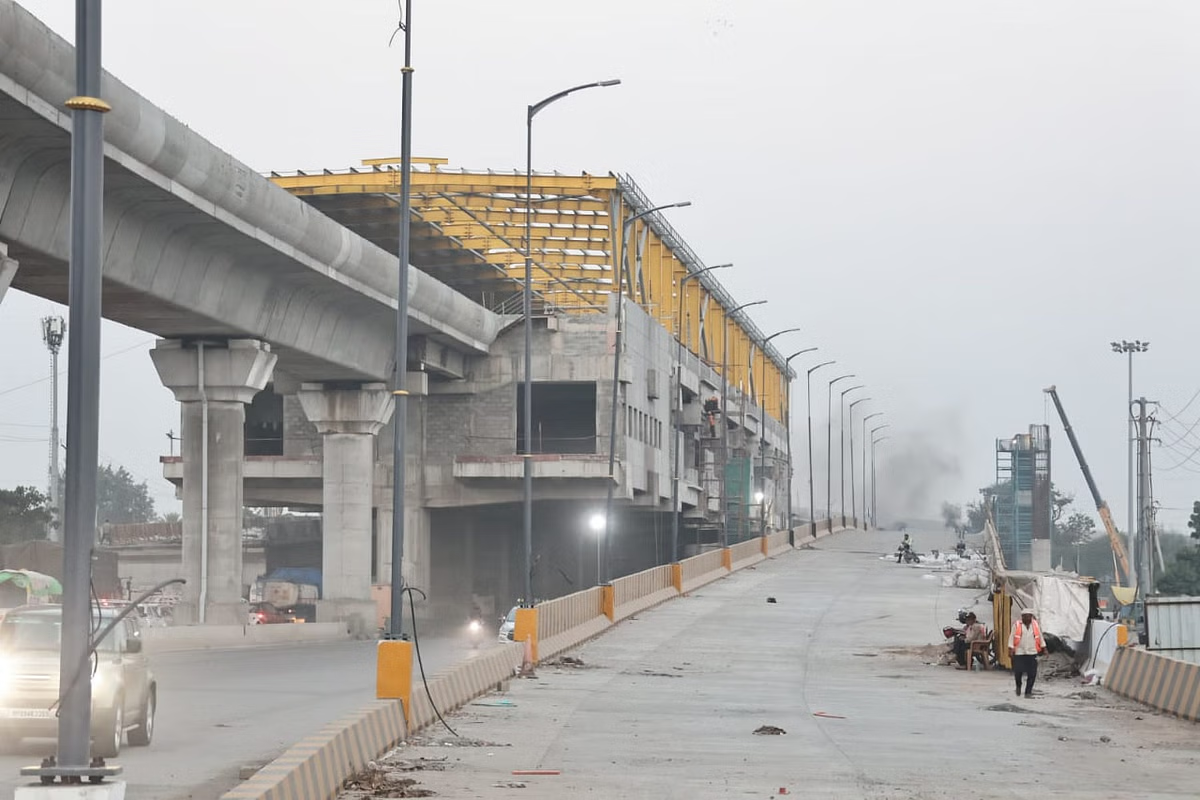A newly proposed Railway Over Bridge (ROB) at Polo Ground in Indore, featuring a striking Z‑shape with two sharp 90‑degree turns, is drawing attention from both citizens and officials. Designed to ease traffic from Laxmibai Nagar via Bhagirathpura towards MR‑4, the unconventional layout has prompted scrutiny from multiple stakeholders, including the state PWD Minister Rakesh Singh.
Minister Singh confirmed that the bridge features a 114‑degree curve and emphasised that strict design protocols—such as a minimum turning radius of 15 metres, super‑elevation, and a 20 km/h speed limit—have been adhered to. He also announced a committee will be constituted to review all ongoing ROB projects in Madhya Pradesh to ensure adherence to safety and urban planning standards.
While the bridge’s unique shape is driven largely by spatial constraints in densely built urban areas, concerns persist over whether adequate traffic surveys were conducted prior to design. Eyewitness accounts note active pillar construction, muddy access roads, and the absence of paved approaches—raising questions about temporary safety and long‑term usability .
The Indore Collector added that the detailed design drawings are currently under evaluation at the state level in Bhopal and that no further work will proceed until approvals are granted. Meanwhile, PWD officials, including Bridge Cell In‑charge Gurmeet Kaur Bhatia and Chief Engineer CS Kharate, have declined detailed comment, noting the matter is being handled by higher authorities .
Indore’s bridge project underscores the complex balancing act cities face when marrying modern infrastructure with sustainable design. The Z‑shaped layout, uncommon in Indian urban contexts, reflects both innovation and compromise. Adherence to technical standards—20 m turning radius, super‑elevation, and reduced speed limits—suggests structural safety isn’t being sacrificed. Yet, the absence of environmental and traffic impact assessments prior to construction can undermine the city’s goals of equity, eco‑friendliness and climate resilience.
From a carbon‑neutral urbanism perspective, it is critical to ensure such infrastructure serves people first—pedestrians, cyclists and public transport—rather than merely accommodating private vehicles. Integrating green corridors, permeable pavements, rainwater harvesting, and solar‑powered lighting could align the bridge with Indore’s sustainability ambitions. The current muddy, unsealed approaches not only delay utility but also elevate stormwater runoff and dust emissions.
The formation of a review committee could provide a vital course correction, ensuring future ROBs in Madhya Pradesh are rigorously evaluated for traffic flow, environmental impact, and community integration. These projects must go beyond structural compliance to encompass equitable access and resilience in the face of extreme weather events.
Public discourse must now shift towards transparent planning. Publishing the design drawings, impact assessments, and safety audits will help restore public trust and ensure the bridge is perceived not as an engineering oddity, but as a forward‑looking asset that enhances sustainable mobility in Indore.
Also Read: Mumbai CCI Clears Kedaara PE Stake in Porter Unicorn Journey




